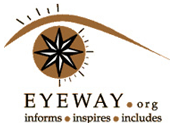Imagine a young blind child, who is too weak to hold a stylus in his hand, to punch holes on a sheet while training how to write in the Braille script.
After impressing holes on the sheet from right to left, the child has to know the pattern of reading it from left to right after flipping the sheet over.
“Very small and weak children, who are blind and learning Braille script for the first time, find it very difficult to hold the stylus and punch it on paper as it requires a lot of strength. We found that they are unable to do it for a long time,” Gubbi R Muktha, Managing Trustee, Mathru Educational Trust for the Blind, which has 86 visually challenged children studying in classes 1 to 10, said.
A group of eight research students from the Carnegie Mellon University has developed a Stand Alone Braille Tutor (SABT), an electronic device that has six button places in a Braille cell format as an alternative to the conventional punching method.
“Students can use the device to learn the placement of the dots on the cell and through this, they can pick up dot patterns for letters and numbers to be written in Braille,” Shree Lakshmi Rao, graduate student at the Department of Design at CMU, who belongs to the team of students, said.
The team has undergraduate and graduate students from the Departments of Mathematics, Electronics and Communication, Civil and Environmental Science and Robotics among others. In 2006, TechBridgeWorld, a research group from the CMU, in collaboration with the trust, had already developed a Braille Writing Tutor (BWT), a technology to assist visually impaired students learn Braille. The device had an electronic slate with a traditional stylus and had to be connected to the computer.
“The SABT is an enhancement of this device as it also teaches students Kannada and Mathematics Braille along with English. It is portable unlike the BWT. To alert the students of the mistakes they make in the pattern, the device also gives immediate audio feedback,” Rao said.
She said that it also teaches students how to spell, identify sounds and eventually help them master traditional Braille writing using the slate and stylus.
“Among the visually challenged children some slow-learners. They find it difficult to learn how to emboss the Braille patterns using the conventional stylus-and-paper methods. This device is expected to be helpful to them,” Muktha said.
Further, the team also declared the software and hardware design of the device open source and made available to all.
“Local manufacturers can use the design and assemble the device using the locally available components as they are all generic. It is certainly a low-cost device and will be made affordable for all,” Rao said.
Source: New Indian Express

Facebook comments